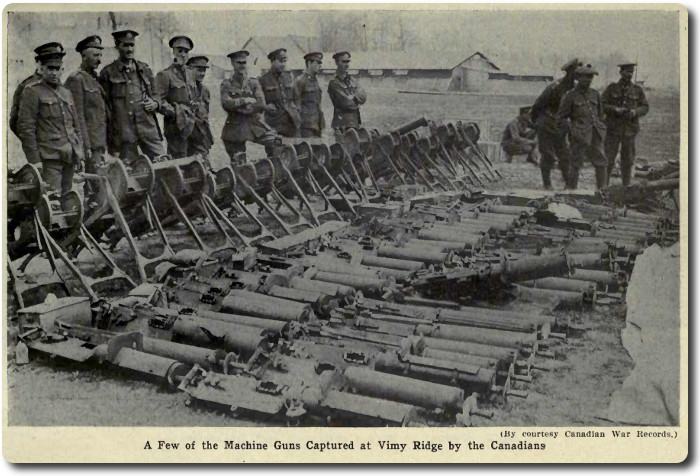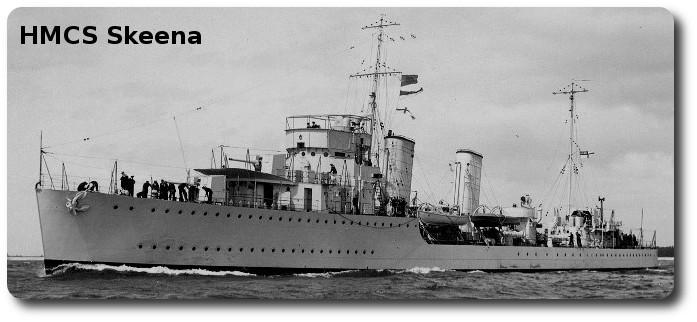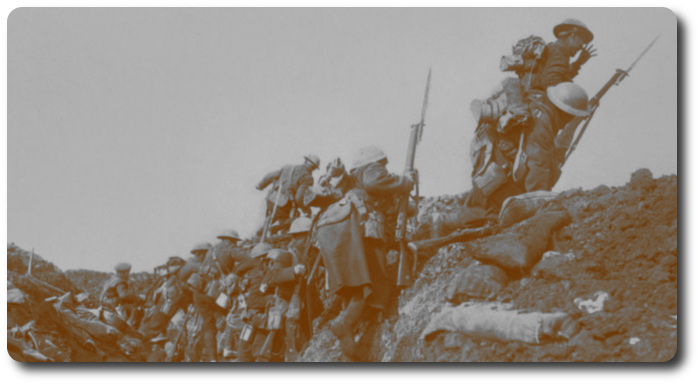Topic: Canadian Armed Forces

Canadian Defence Budget Costs Mounting Steadily (1968)
Quebec Chronicle-Telegraph, Quebec City, 29 November 1968
Washington (CP)—The standard American army rifle in 1946 cost $31. Its modern equivalent costs $150.
That five-fold increase in buying today's simple bread and butter military equipment holds generally true through the vastly more complicated and expensive items in modern arsenals.
It helps explain, officials say here, the protracted nature of Canada's review of military commitments for NATO, for North American defence and elsewhere—as reconciled with other priorities.
Canada has become only a moderate military spender. The Institute of Strategic Studies in London, for example, rates the over-all Canadian defence budget sixth among the 15-country NATO alliance and Canada 12th in the slice of its gross domestic product allocated to defence.
It says nine other NATO countries maintain larger defence establishments.
But the simple maintenance of that status with new weapons to replace those now nearing their useful life will cost Canada tens of millions for aircraft alone at today's steadily-rising prices.
Newer Voodoos Needed
Three squadrons of Voodoo interceptor aircraft, acquired off the shelf from the U.S. for North American defence purposes, will be obsolete in 1973. They could be "stretched out" by swaps for some slightly newer American Voodoos. The U.S. price tag for each plane was $1,800,000.
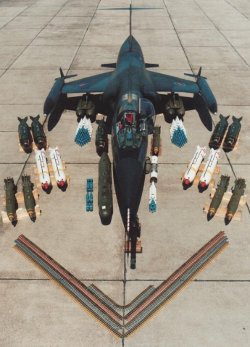 Canada has six squadrons of CF-104 Starfighters with NATO, manufactured in Canada and also due to be retired in 1973. That price was about $2,000,000 a plane.
Canada has six squadrons of CF-104 Starfighters with NATO, manufactured in Canada and also due to be retired in 1973. That price was about $2,000,000 a plane.
The Canadian defence department, mindful perhaps of the ill-fated Avro Arrow abandoned in 1959, recently decided against entering a consortium with European allies to build an all-purpose fighter interceptor aircraft.
Defence Minister Cadieux said 250 planes might have cost Canada as much as $2,000,000,000 over seven to eight years.
The alternative is to buy another off the shelf aircraft from the U.S., or some other supplier, unless the defence review leads to some other solution.
Canada also has 11 Canada-built Yukon and 24 Hercules transport aircraft to replace, not to mention that Canada-built Argus for anti-sub marine work.
Consider Giant Craft
Some consideration has been given to the world's largest aircraft being built by the U.S., the C5A, designed to carry about 700 troops each, or tanks or helicopters.
The U.S. defence department has just announced that the estimated price for each plane has gone up by $10,000,000—to about $35,000,000. It could be higher if labor and material costs, and technical bugs, continue their impact.
A strictly Canadian example of inflation is the four helicopter-carrying destroyers first planned in 1966 and perhaps earmarked for NATO use as Canada's contribution to the NATO response to the Soviet invasion of Czechoslovakia.
The original cost estimate for all four was about $160,000,000 and it now exceeds $220,000,000.
A lengthy list of then and now arms prices was read into one congressional record in October, based on official U.S. list prices, as a warning not to expect any reduction in military spending in the future.
The old B-17 of Second World War fame cost $218,000 and the controversial F-111 fighter-bomber costs $7,000,000. The F-86 Sabre jet fighter used in Korea cost a little less than $300,000—Canada built about 1,800 at an average cost of $355,000—and the F-4 Phantom, the best U.S. plane in Vietnam, costs $2,100,000.
A Second World War submarine came at $4,700,000 and a modern nuclear attack sub costs $77,000,000. The battleship New Jersey cost $108,000,000 to build between 1940 and 1943. To get it out of mothballs, for a belated appearance off Vietnam recently, cost $20,000,000.
An 81 millimetre mortar cost $669 in 1946 and costs $2,430 this year.
Even the cost of a cot, canvas, folding, is up. It cost $6.00 eight years ago and now it costs $15.


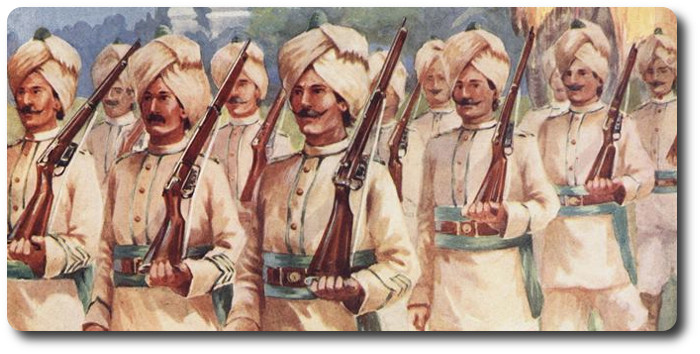

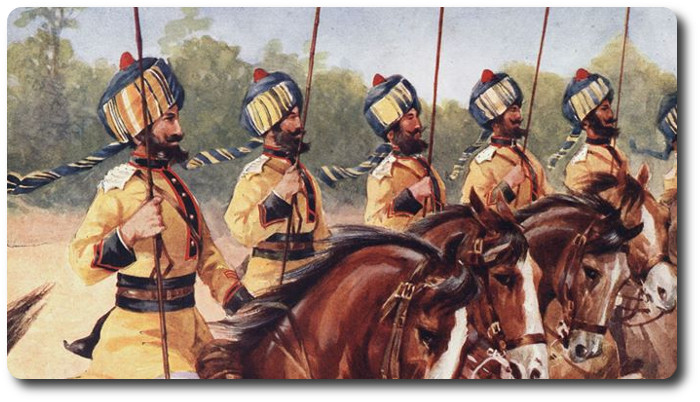


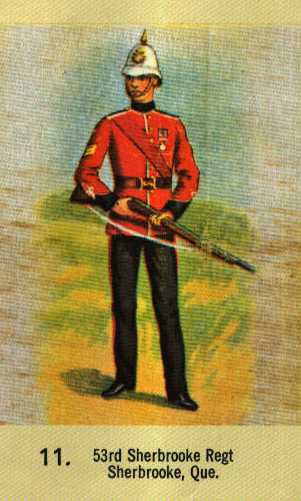

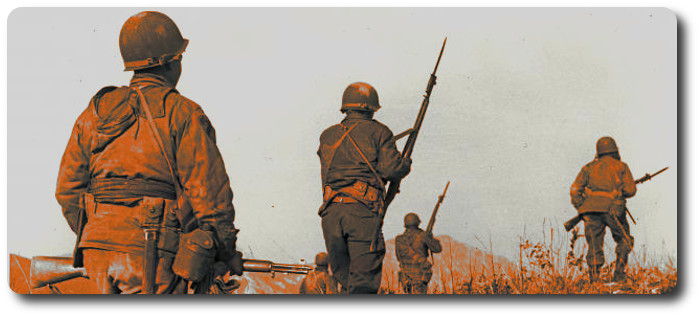
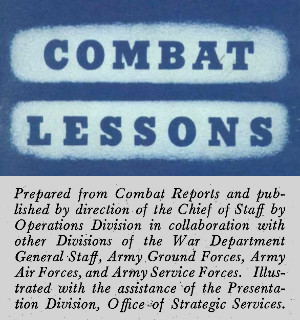 Combat Lessons, Number 2, September 1946
Combat Lessons, Number 2, September 1946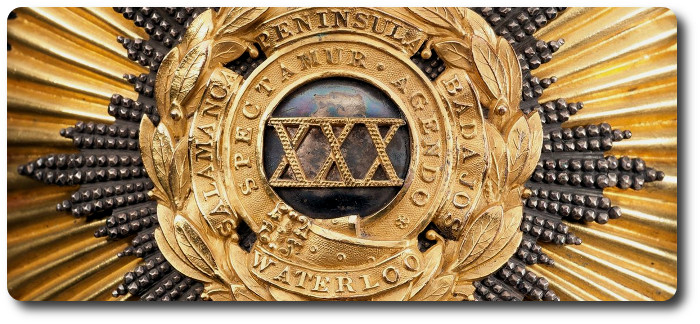
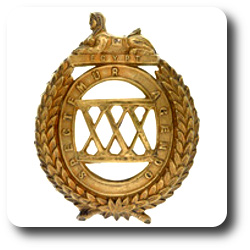 In Toronto there lives a retired colonel of the British army, staunch and loyal, who allowed a private soldier of good character, in the 30th Regiment, to marry his daughter. His regiment, soon after he marriage, was ordered to Montreal, and he took his wife with him, where he deserted both her and the Queen's service, and came across the lines to the protection of the stars and stripes. The colonel indignantly sent for his daughter, and she has continued to live with him, hearing occasionally from her husband, but refusing, or rather permitting her father to do it for her, to go to him as requested. Last week they were suddenly surprised by the appearance of the deserter, who entered the house without ceremony. His wife flew to him and her father at him, the latter arresting him as a deserter from Her majesty's service. In vain did the son-in-law argue and the daughter weepingly plead. With Roman firmness the British colonel insisting upon handing him over to the authorities, assuring him that thus he should treat his son or his brother, had either been a traitor. With an unyielding conviction of duty, the colonel dragged his erring relative to the barracks, and gave him up to the penalties of the law.
In Toronto there lives a retired colonel of the British army, staunch and loyal, who allowed a private soldier of good character, in the 30th Regiment, to marry his daughter. His regiment, soon after he marriage, was ordered to Montreal, and he took his wife with him, where he deserted both her and the Queen's service, and came across the lines to the protection of the stars and stripes. The colonel indignantly sent for his daughter, and she has continued to live with him, hearing occasionally from her husband, but refusing, or rather permitting her father to do it for her, to go to him as requested. Last week they were suddenly surprised by the appearance of the deserter, who entered the house without ceremony. His wife flew to him and her father at him, the latter arresting him as a deserter from Her majesty's service. In vain did the son-in-law argue and the daughter weepingly plead. With Roman firmness the British colonel insisting upon handing him over to the authorities, assuring him that thus he should treat his son or his brother, had either been a traitor. With an unyielding conviction of duty, the colonel dragged his erring relative to the barracks, and gave him up to the penalties of the law.
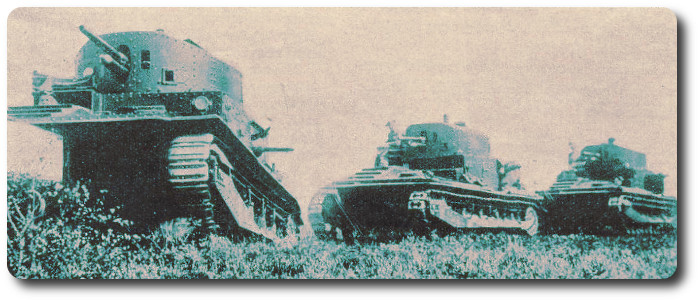

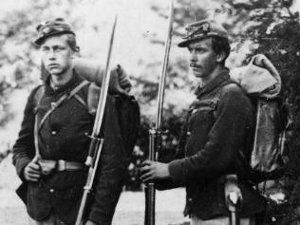 The dispatches from General McClellan's army have several times spoken of a "regular bayonet charge." The pride of the English army has been in bayonet force.—But the dispatches state something unusual, and which must be considered complimentary to the enemy as well as to our own soldiers. We allude to the remark that the enemy were driven a mile, "during which one hundred and seventy-three rebels were killed by the bayonet alone." It is a very rare occurrence that men stand the approach of a well directed bayonet charge, and it is understood that the highest courage and daring are necessary to resists it. There are stories extant of regiments meeting bayonet to bayonet, and crossing weapons. But we do not find any authemtication of these. One favorite military anecdote relates that an English and a french regiment once met in that way and stood pressing against each other without wounding a man for a full half hour. In the Mexican war we carried several important points "with the bayonet," but this was seldom with any direct heavy charge in line.—We once asked a distinguished officer whether one of those charges was an old fashioned bayonet charge in solid rank.—He laughed and said it was very different. When the word "charge" was given the men started on a run, yelling and shouting, and throwing off all encumbrances as they ran. The very appearance of a body of furious tiger-like men, approaching at a full run, and making the air hideous with their cries, frightened the enemy from his position, and it was seldom that a man had a chance to touch another with his bayonet.
The dispatches from General McClellan's army have several times spoken of a "regular bayonet charge." The pride of the English army has been in bayonet force.—But the dispatches state something unusual, and which must be considered complimentary to the enemy as well as to our own soldiers. We allude to the remark that the enemy were driven a mile, "during which one hundred and seventy-three rebels were killed by the bayonet alone." It is a very rare occurrence that men stand the approach of a well directed bayonet charge, and it is understood that the highest courage and daring are necessary to resists it. There are stories extant of regiments meeting bayonet to bayonet, and crossing weapons. But we do not find any authemtication of these. One favorite military anecdote relates that an English and a french regiment once met in that way and stood pressing against each other without wounding a man for a full half hour. In the Mexican war we carried several important points "with the bayonet," but this was seldom with any direct heavy charge in line.—We once asked a distinguished officer whether one of those charges was an old fashioned bayonet charge in solid rank.—He laughed and said it was very different. When the word "charge" was given the men started on a run, yelling and shouting, and throwing off all encumbrances as they ran. The very appearance of a body of furious tiger-like men, approaching at a full run, and making the air hideous with their cries, frightened the enemy from his position, and it was seldom that a man had a chance to touch another with his bayonet.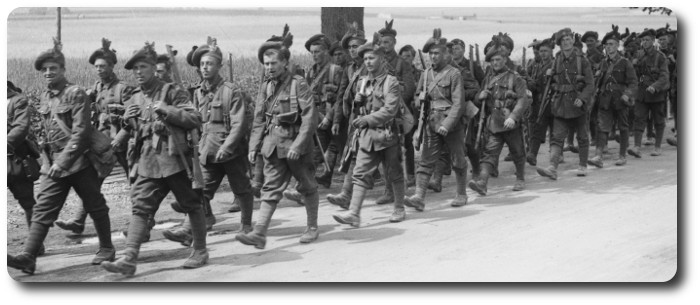
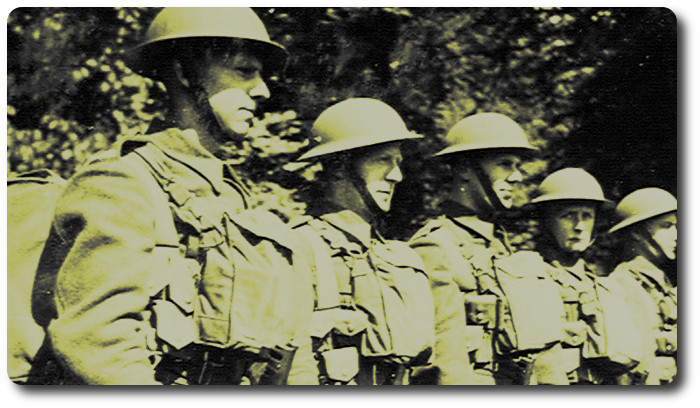
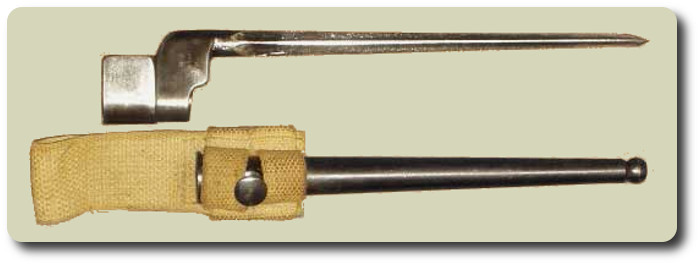

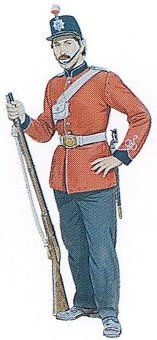 1. His Excellency the Administrator of the Government and Commander-in-Chief, having had under consideration the possibility that raids or predatory incursions on the Frontier of Canada, may be attempted during the winter, by persons ill disposed to Her Majesty's Government, to the prejudice of the Province and the annoyance and injury of Her Majesty's subjects therein;
1. His Excellency the Administrator of the Government and Commander-in-Chief, having had under consideration the possibility that raids or predatory incursions on the Frontier of Canada, may be attempted during the winter, by persons ill disposed to Her Majesty's Government, to the prejudice of the Province and the annoyance and injury of Her Majesty's subjects therein;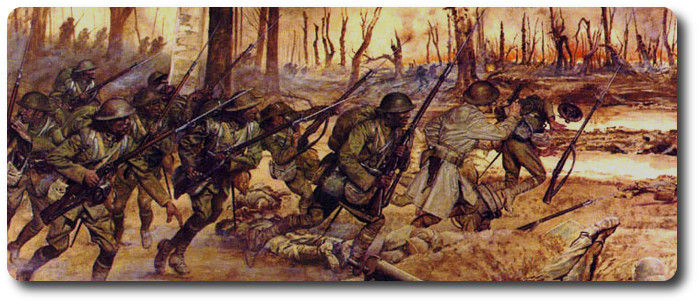

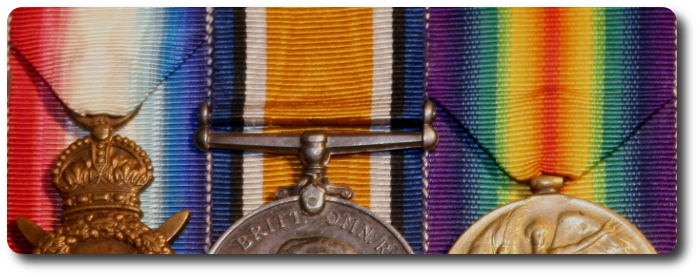
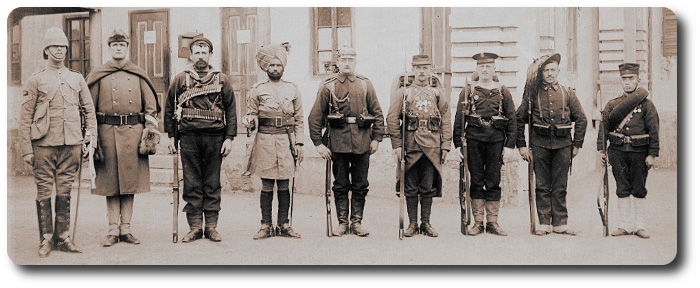
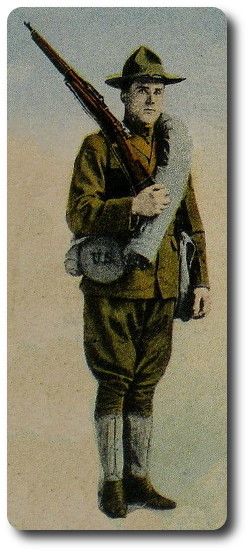 Hollywood, Cal.—(AP)—If there should be another world war tomorrow the doughboys drawn from Hollywood would astonish the military experts.
Hollywood, Cal.—(AP)—If there should be another world war tomorrow the doughboys drawn from Hollywood would astonish the military experts. 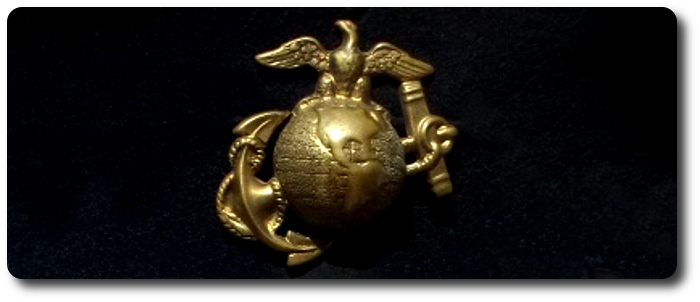
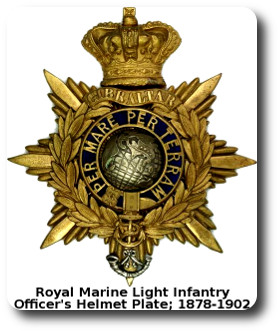 Neither at home nor in this country is the general public so well acquainted with the marine forces as it is with the army or navy. But the British marines are indeed a credit to their country, and are generally allowed to be as fine as, of not finer, than any other branches of the service, with the exception, perhaps, of Her Majesty's Guards. Today, in Montreal, the United States marines are well represented on board the U.S. Man-of-War "Galena," and the visitor only needs to enter into conversation with them to find out what a smart and intelligent body they are. They muster but twenty-six, with one officer, Lieutenant B.R. Russell, in command, through whose courtesy the writer was enabled to find out a good deal of the interior economy, discipline, etc., of this fine corps. The "Galena" was present at Alexandria after the pillage and burning of the city, and at the bombardment; but Lieutenant Russell is the only officer on board the ship to day who was serving with her at that time. A detachment of sixty American marines was chivalrously sent by Admiral Nicholson to act with the Royal Marines of the British squadron, but their efforts were confined to putting down the plunderers and incendiaries,—after which they returned to their own ships. The "Galena" was afterwards ordered to South America.
Neither at home nor in this country is the general public so well acquainted with the marine forces as it is with the army or navy. But the British marines are indeed a credit to their country, and are generally allowed to be as fine as, of not finer, than any other branches of the service, with the exception, perhaps, of Her Majesty's Guards. Today, in Montreal, the United States marines are well represented on board the U.S. Man-of-War "Galena," and the visitor only needs to enter into conversation with them to find out what a smart and intelligent body they are. They muster but twenty-six, with one officer, Lieutenant B.R. Russell, in command, through whose courtesy the writer was enabled to find out a good deal of the interior economy, discipline, etc., of this fine corps. The "Galena" was present at Alexandria after the pillage and burning of the city, and at the bombardment; but Lieutenant Russell is the only officer on board the ship to day who was serving with her at that time. A detachment of sixty American marines was chivalrously sent by Admiral Nicholson to act with the Royal Marines of the British squadron, but their efforts were confined to putting down the plunderers and incendiaries,—after which they returned to their own ships. The "Galena" was afterwards ordered to South America.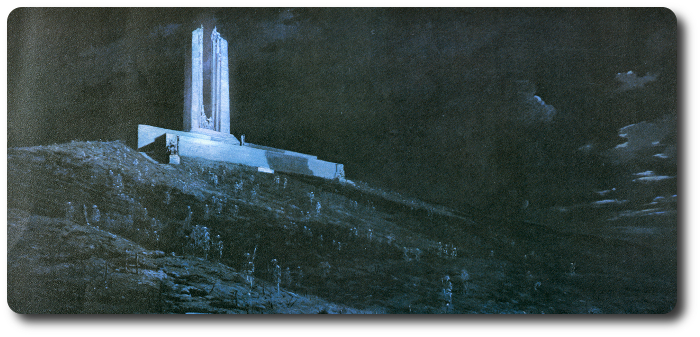
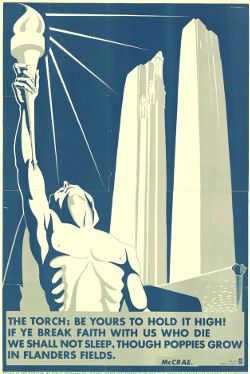 April 9, 1917, was Easter Monday.
April 9, 1917, was Easter Monday.